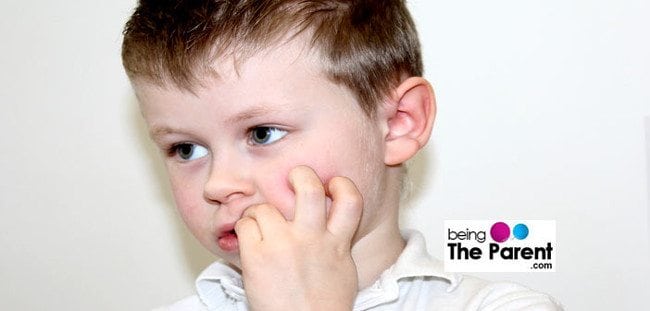From the time that we begin to walk, have teeth with which to chew and a desire for food and drink we develop good and bad oral habits. Fortunately, we slowly learn, through trail and error, and through parental guidance, what is good or bad, wrong or right. Some potentially destructive bad oral habits do, however, seem to stand out in our western culture as more difficult for some to control or correct.
These ten bad oral habits of children can lead to tooth damage, tooth decay, loss of teeth and oral soft tissue damage. They all can be avoided and corrected with a recognition of the potential damage and a willingness to avoid those likely problems. As a parent myself, I raised two daughters. I was tasked with helping them correct many of these same bad oral habits.
1) Chewing on Hard Objects Like Ice, Suckers and “Jaw Breakers”.
Kids don’t think about consequences. They just like to crunch stuff. Chewing items like ice or hard candy can lead to fractured teeth. If the hard candies contain sugar another problem can arise. Cavities can occur as the sugar sticks to the teeth and attracts the bacteria that cause tooth decay.
The solution is to avoid hard candy altogether. Additionally, don’t serve drinks with ice to children.
2) Grinding and Clenching Teeth
Persistent grinding of teeth can cause teeth to fracture and wear. It can lead to jaw problems. Custom fit bite guards can help. Night grinding in children may be a sign of a more significant problem. These children may suffer from airway obstruction.
Have your dentist review your child’s history of grinding and help you assess the possible need for a sleep study with a qualified physician.
3) Sodas and Energy Drinks
Companies today have even young consumers convinced that water alone is not good enough. Companies market heavily to children that they need to “rehydrate” and “power-up” with energy drinks like Gatorade, PowerAde, 5-Alive and sodas like Coke and Mountain Dew. The sugars and acids lead to tooth decay.
The solution is to drink good old water.
4) Brushing Too Hard
Brushing too hard with a nylon toothbrush can damage tooth and root surfaces and lead to gum recession.
The solution is to teach our children from a young age and up that daily gentle brushing leads to the removal of the soft plaque that is forming. There is no need to be overly aggressive. Polyester brushes, like the Curaprox Smart Toothbrush for children, are the softest brushes available. They effectively eliminate the plaque that can lead to cavities and gum disease while causing no damage to the teeth and gums.
5) Nail Biting
Nail biting can lead to fractures and chipping of front teeth. It is a bad habit that can begin at a young age.
Possible solutions include: Painting on bad tasting nail polish, keeping hands busy with objects like a soft stress-ball when under stress, and awareness.
6) Sucking on Fingers and Thumb
It is amazing how many toddlers continue to suck on their fingers and thumbs as they grow older. This bad habit can lead to deformation of the upper and lower arches of the mouth. It can lead to the “bucked teeth” and “piano key teeth” look. Also, as kids get older they pick up more and more germs on their hands. It is very unhealthy to suck on your fingers and thumb.
Again, a soft stress-ball may work to occupy their hands. Self-awareness must be taught. As a last resort mouth appliances can be custom fit by your dentist that discourage this habit.
7) Chewing Sugar Chewing Gum and Sugar Bubble Gum
Sugars quickly gather in young peoples mouths creating a hot spot for the growth of the bacteria that causes cavities. It is surprising how many children today still chew sugar filled chewing and bubble gum. Parents are encouraged to be sure that their children are chewing sugar free gum.
8) Snacking Throughout the Day on Sweets
Again, the bacteria that cause tooth decay love sugar. If your child is constantly snacking on sweets then they are creating a haven for sugar bugs that cause cavities.
Raise your children on healthy snacks like carrots and celery. And be sure that your children brush at least once a day with a soft toothbrush.
9) Running with Items in Their Mouth
As a dentist I have treated children who have tripped and fallen with pens, candy canes and tooth picks in their mouths.
In these cases the hard, sharp object tore into the upper palate, or roof of the mouth. The pain was significant and the healing was quite uncomfortable.
Running, and even walking, with objects in ones mouth does expose a child to potential painful oral tissue damage. It is advisable to remove the pen, the candy cane and the tooth picks before running across the room.
Children do learn the difference between good and bad habits.
And, parents and mentors can indeed help them avoid some of the pitfalls of these 9 bad oral habits. In the end, as children grow into adolescence and adulthood, they will make their own choices. Hopefully, these oral habits can be avoided as they grow and develop.
Peter V. Vanstrom, DDS, PC
Artistic Dentistry of Atlanta


